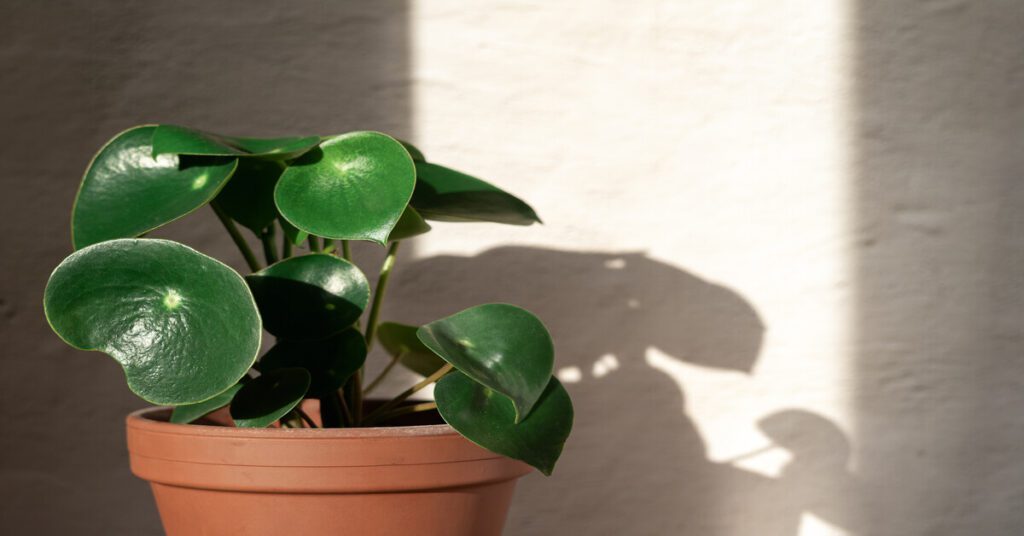Peperomia Raindrop (Peperomia Polyborya) is an evergreen houseplant native to the rainforests of South America. It gets its common name from the small, pointed leaves that look like droplets of dew.
As the plant grows, these leaves become more extensive and more sessile. The adult Raindrop Peperomia has a compact, bushy shape.
Peperomia Raindrop Plant Care
Raindrop Peperomia requires very little care. When growing Peperomia Polyborya plants, it is important to consider the unique needs of a plant native to the rainforest. Tropical plants like these need warm temperatures, humidity levels, and filtered sunlight.
Read on to learn about caring for your peperomia, proper watering requirements, fertilizing schedules, and other maintenance tips.
Soil
Sandy loam is the ideal soil for growing peperomia. Raindrop Peperomia can tolerate a wide range of soil conditions but should be grown in well-drained soil. Plants can also be grown in cactus soil.
Watering
Peperomia Raindrop is considered a low-water plant. From May to August, you should water your plant once every 7-10 days; once every 15-20 days is enough during the colder months. It is best to allow the soil to become slightly dry between waterings.
Lighting
Peperomia Polyborya plants thrive in bright, indirect sunlight. Too much direct sunlight can cause leaf burns. The ideal place is near an east-facing window.
Humidity & Temperature
Raindrop Peperomia thrive in temperatures between 65 – 80 degrees Fahrenheit. They are sensitive to temperature changes. Peperomia likes high air humidity, 40 – 60%, so you should mist it regularly during the winter in a warm room or place the pot with the plant on wet pebbles.
Fertilizing
Peperomia Raindrop plants are very low-maintenance and will grow without fertilizing. For better results, you can use liquid fertilizer for green plants every two weeks during the growing season.
Propagation
The best way to propagate Peperomia Raindrop is by leaves, like African violets, leaving a part of the petiole about 1 in long and placed in perlite or sand. Plants take roots from June to August when there is enough heat.
Plant them in pots, but be sure to put 3-4 in the same pot to get a nice bushy look. Pots should be as small as possible because the plant doesn’t need much space.
Diseases & Pests
The most common Raindrop plant diseases are ring spots and oedema, both caused by a virus. Plants overwatered and in a dark place are prone to fungal diseases such as Phytophthora rot and cutting rot. It is important to destroy all affected plants and to take cuttings from healthy plants using sterilized tools.[1]
Common pests are red spiders or mites. You can quickly and safely treat them with mild soap.
Toxicity
Peperomia is a non-toxic plant. It is safe to grow around children and pets. There is no evidence of allergic reactions when digested or in contact with skin. Waxy leaves are not particularly interesting for pets to play with.[2]
When to Repot Peperomia Polybotrya (Raindrop)
It would be best if you transplanted Peperomia into a shallow clay pot every second or third year in the spring. The plant should be carefully removed from the pot so as not to damage the root system.
You should place gravel or potsherds as drainage at the bottom of the pot. Clay pots of smaller dimensions are ideal for water regulation.
Peperomia Raindrop vs Pilea
Peperomia Raindrop and Pilea are similar plants that are often mixed up. They both have dark green, shiny, thick leaves and long stems. Pilea has longer and thinner stems and round leaves, while Raindrop has pointed leaves and shorter stems. Pilea plants require lower humidity levels and are more tolerant to direct sun.
References:
[1] Peperomia diseases Retrieved October 25, 2022, from https://ipm.illinois.edu/diseases/rpds/653.pdf
[2] Poisonous plants Retrieved October 25, 2022, from https://www.aspca.org/pet-care/animal-poison-control/toxic-and-non-toxic-plants/p?page=1

